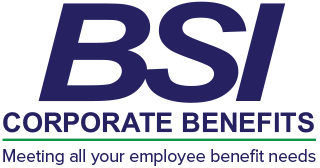The Rise of Anti-Obesity MedicationsWhat Employers Need to Know About the New Weight Loss Trend
A new trend is taking shape when it comes to New Year’s resolutions—more employees are turning to anti-obesity medications (AOMs) to help them achieve their weight loss goals. According to a recent survey, more than one out of four consumers in the U.S. plan to use a weight loss drug as part of their 2025 resolution (1).
This shift from traditional weight loss methods like dieting and exercise to using medications represents a significant change in how people are approaching their health and wellness goals. While this trend is gaining momentum, it also brings about several challenges that employers will need to navigate in order to support their employees effectively.
Why Are Employees Turning to AOMs?
For many employees, traditional weight loss methods, such as dieting or hitting the gym, haven’t yielded the desired results. This frustration is prompting a growing interest in AOMs, which have demonstrated the potential to deliver transformative results in weight management. Medications like GLP-1 agonists, which are designed to mimic the body’s natural hormones that regulate appetite and insulin, are showing promise in helping people lose weight and improve metabolic health.
In fact, 89% of employees believe using a weight loss drug will help them achieve their 2025 weight loss goals (1). It’s clear that the quick results promised by AOMs are appealing, especially for those who have struggled to maintain long-term weight loss using more traditional approaches.
The Role of Employers in This Shift
With a growing number of employees turning to AOMs, employers are facing a new set of challenges when it comes to managing employee health and wellness. Some of the key issues employers need to consider include:
Cost and Accessibility
One of the biggest hurdles to accessing AOMs is affordability. These medications can be expensive, and many health insurance plans do not yet cover them. Some employees, whose benefits don’t cover AOMs, may turn to compounded versions of the drugs, which can be less expensive but also come with safety concerns. Employers may find themselves needing to address the rising cost of these medications within their health care budgets, which may lead to higher premiums for everyone.
“Employers will need to proactively manage costs, coverage, and employee education to ensure that AOMs are used safely and effectively. This will help support employees in their weight loss journeys while addressing the challenges and opportunities presented by the growing demand”. – Shawn Hughes, SVP, Client Retention
Coverage and Eligibility
As demand for AOMs increases, employers will need to determine how to structure their benefit plans to support those who wish to use these medications. Should AOMs be covered for all employees, or only those with a BMI above a certain threshold or with obesity-related health conditions? Many employers may opt to set eligibility criteria, requiring employees to engage in wellness programs or lifestyle modifications before granting access to these medications.
Managing Utilization
As more employees turn to AOMs for weight loss, employers will need to manage utilization to ensure these drugs are being prescribed and used appropriately. This may require implementing prior authorization processes to ensure that employees have made efforts to lose weight through diet and exercise before turning to medications. Additionally, employers will need to monitor prescription patterns to ensure that employees aren’t misusing the drugs.
Education & Lifestyle Modification Programs
The need for better education and lifestyle modification programs that empower employees to make healthier choices will continue in response to the increased usage of AOMs. These programs not only keep employees informed about their health but also help reduce healthcare and medication costs. Leading programs such as HealthCheck360, Omada Health, and Livongo combine personalized coaching, medication oversight, regular check-ins, and intuitive mobile apps to engage employees, motivate lasting changes, and support overall wellness. This comprehensive approach delivers benefits for both employees and employers by enhancing well-being and driving down healthcare expenses.
The Future of AOMs
The AOM market is expanding rapidly, with new drugs and combinations in the pipeline. Goldman Sachs projects the global market could reach $100 billion by 2030 (2), making AOMs a key player in weight loss treatment. As this market evolves, employers will need to adapt.
By proactively managing costs, coverage, and employee education, employers can ensure these medications are used safely and effectively while supporting employees in their weight loss journeys. As AOMs continue to evolve in employee wellness, it’s essential for employers to stay ahead of the curve.

